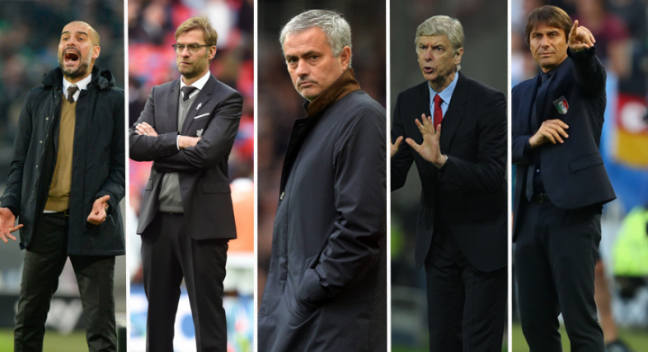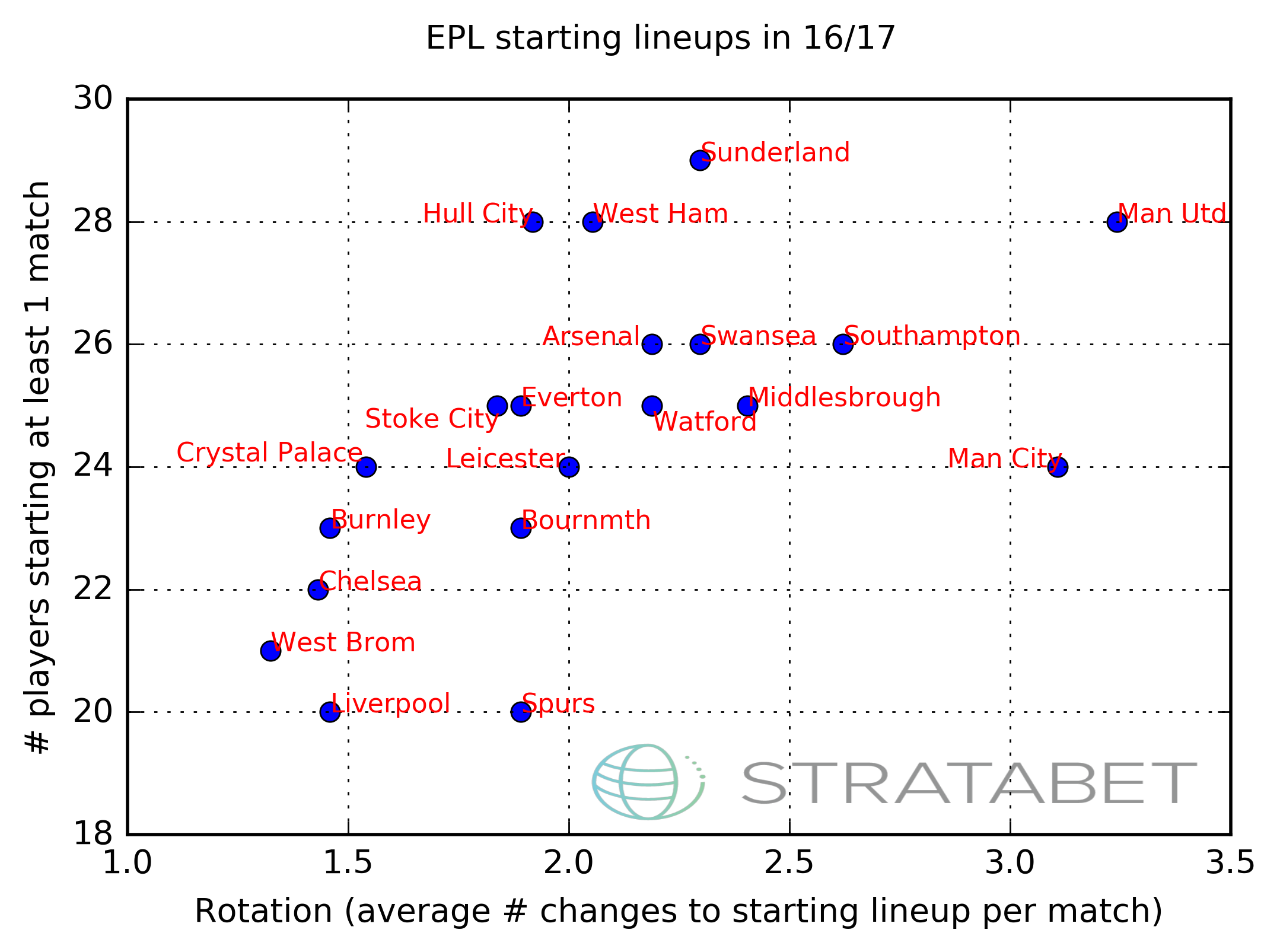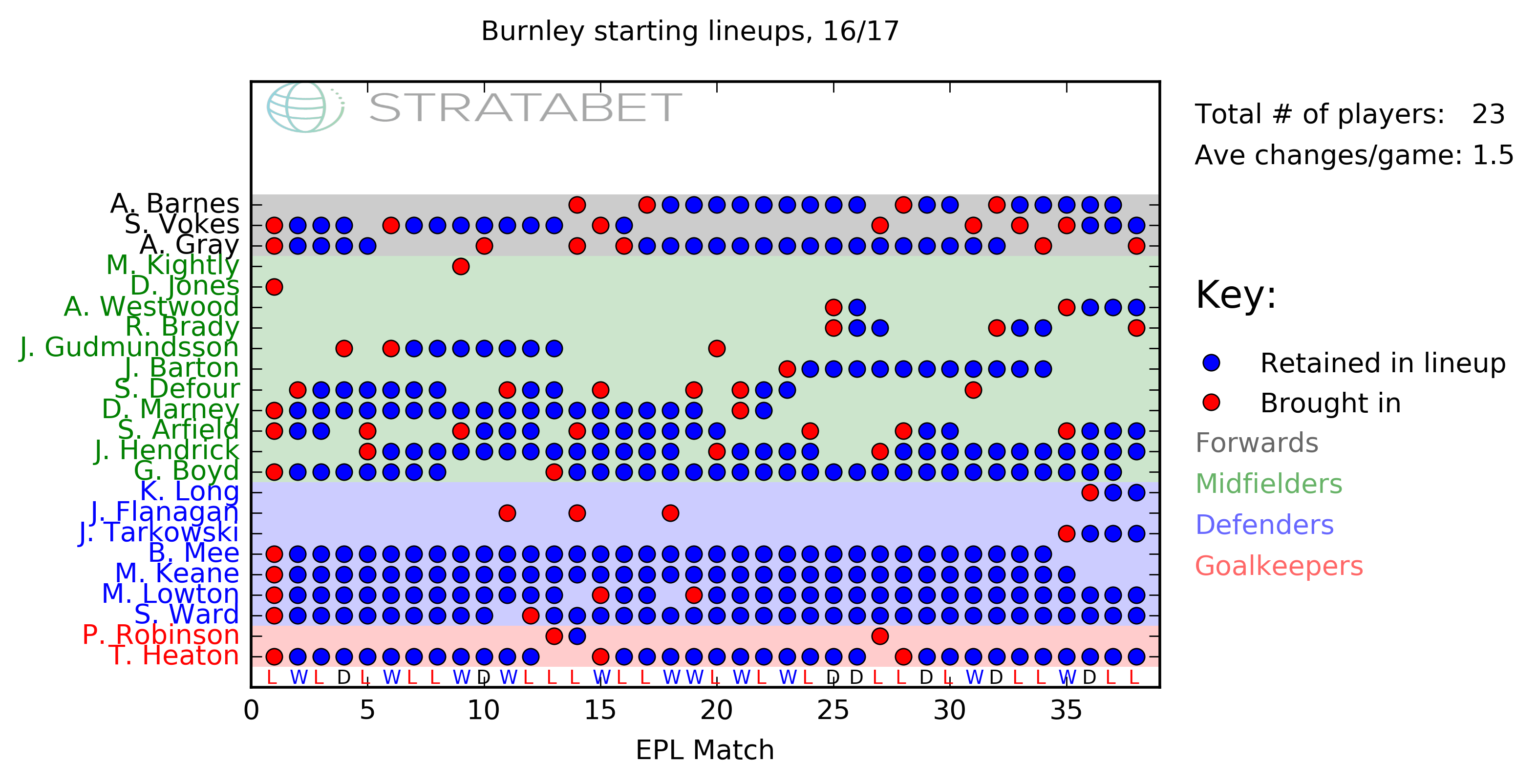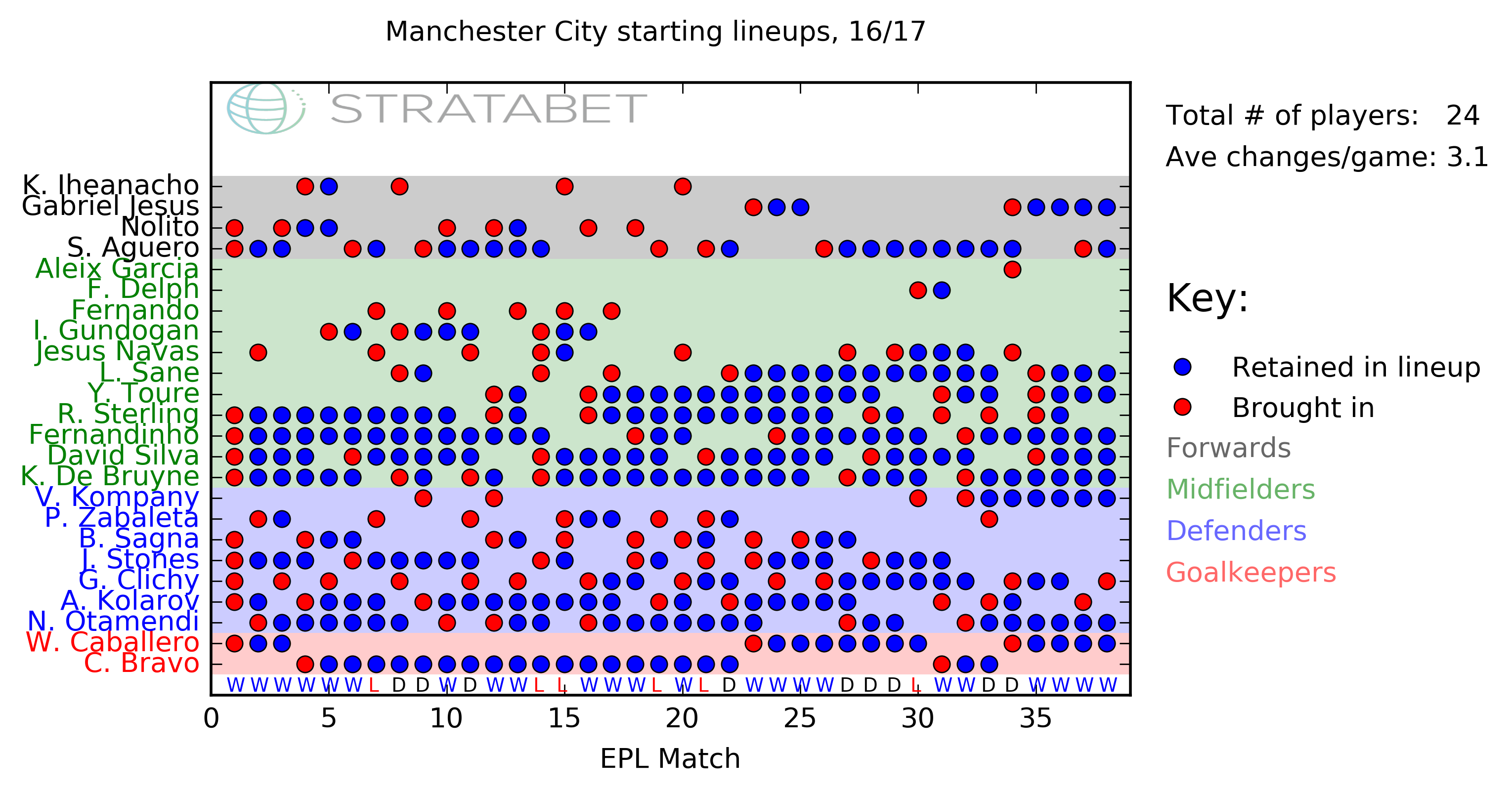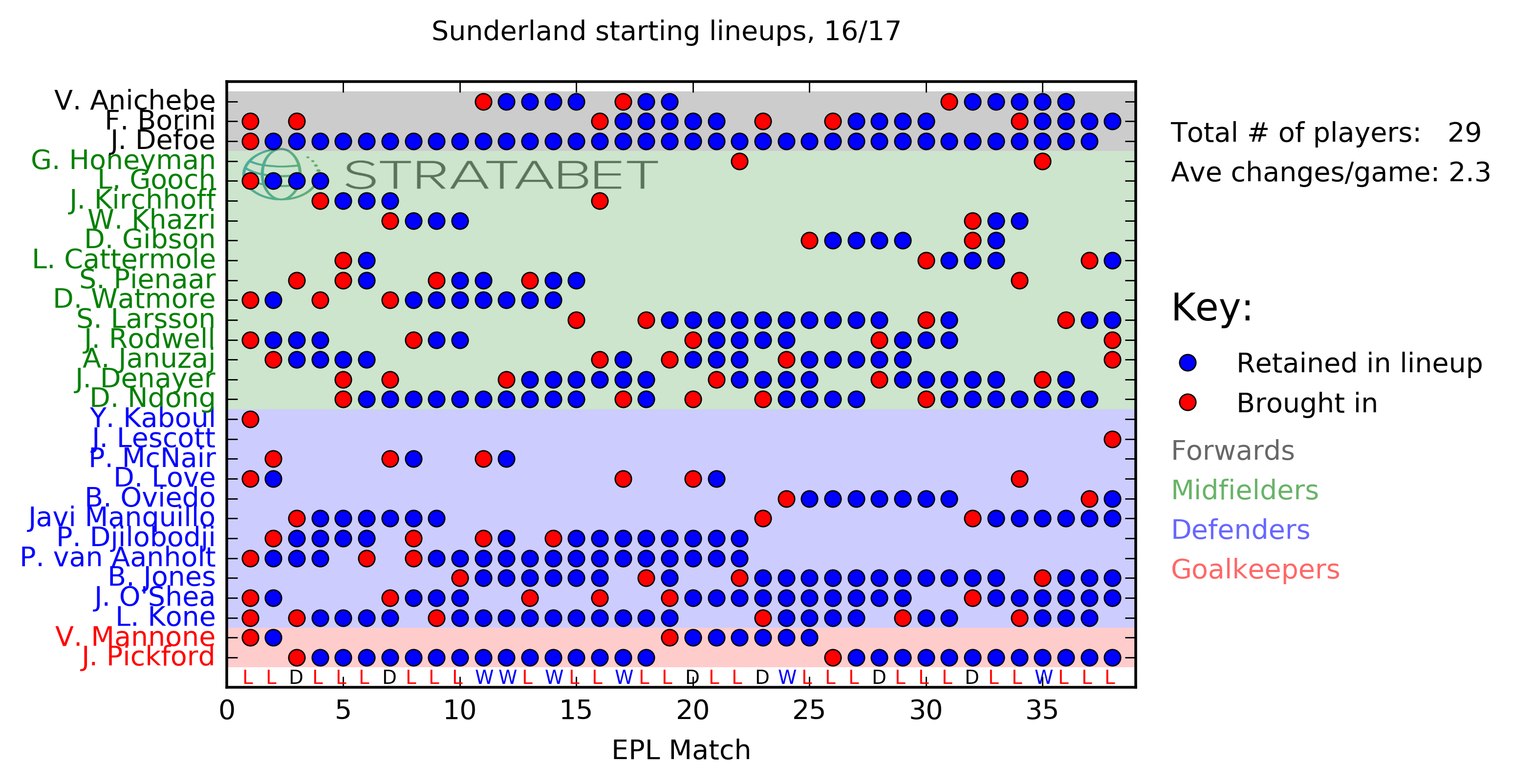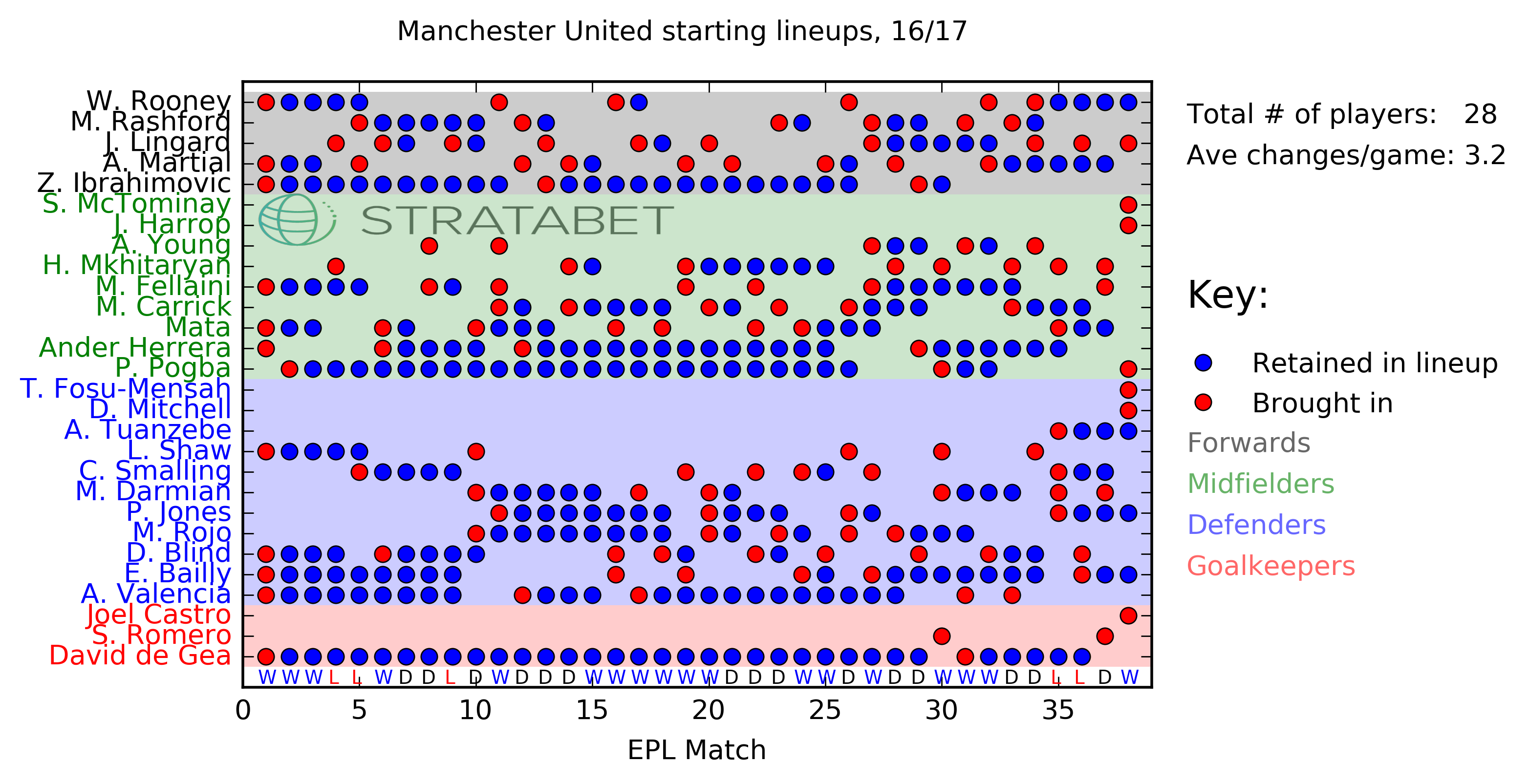In May 2015 Bournemouth clinched top spot in the Championship and achieved promotion to England's top division for the first time in the club’s history. When that happened there was much fanfare (deserved, of course), yet a few matches into 2015/16 season the novelty appeared to wear off a little and they haven’t received a great deal of coverage since. This despite having achieved safety from relegation twice in a row. It’s a shame really because a deeper look at them reveals some interesting tidbits and lessons to learn.
Their first season in the Premier League was shaky in the extreme. They finished 16th and five points above the relegation spots, yet had a worse goal difference (-22) than the two teams below them (Sunderland and the relegated Newcastle). Their non-pen expected goal difference however was -11.4.
This disparity stems from a defence with a tendency to collapse. Despite having a non-pen xGA of 48.4 they ended up actually conceding 63 goals. Parts of this may well be variance, but we have to also consider that goals were possibly easier to score against them than a team with a more defensive focus. They conceded 3 or more goals in 11 matches. Of those 11 only 5 were against teams who finished in the PL’s top 6, so this wasn’t a case of just getting bullied by the big boys.
Cut to the end of the 2016/17 season and they finished 9th with an improved goal difference of -12. So they sorted out that defence then? Well, no. In fact, it got even worse. They conceded 60 non-penalty goals and again conceded 3 or more goals in 11 matches. But this time with an expected goals against of 57.2. They gave up more shots (11.6 in 15/16 vs 14.5 in 16/17) and those shots were also closer to goal on average (17.7 metres in 16/17 vs 18.3 metres in 15/16).
There’s also little to suggest they’re getting defenders in front of shots and fooling expected goals models in a Burnley-esque style. Stratagem data for 2016/17 shows that they had 2 to 4 players in front of the shot 72% of the time and 5+ players in front of it 13.7% of the time, both numbers being bang in line with the league average.
The improvement they did make, such as it is, lay in the attack. Last season they posted an iffy non-pen 36.9 expected goals for tally. This season that has moved forward to 43.0 xGF, a number more befitting a midtable finish.
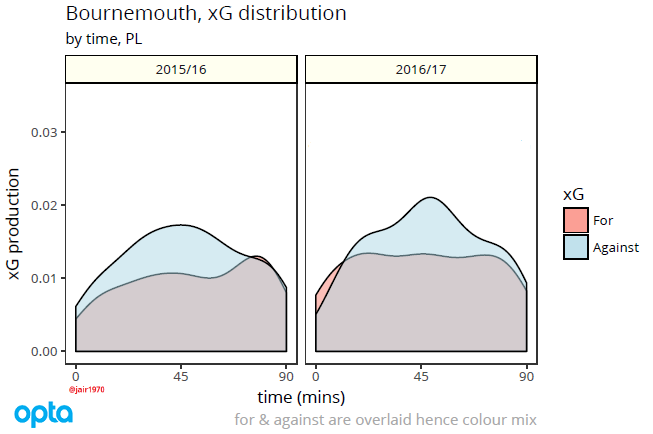
Despite this improvement, however, open play is not where Bournemouth’s bread is buttered. They scored 7 penalties in 16/17, joint-first in the PL alongside teams you’d perhaps ‘expect’ to be there: Tottenham, Liverpool and Man City. It could have been even more as their 10 penalties won overall was the best in the league.
This is an interesting quirk to Howe’s Bournemouth. It appeared absent in 15/16 when they only won 4 penalties, but if you look back to their time in the Championship it becomes clear it is a point of emphasis. In 2014/15 when they achieved promotion and the Championship title they won a staggering 16 penalties, a full 7(!) more than the team who won the 2nd most.
This could well be a result (intended or otherwise) of Bournemouth’s playing style. Per Stratagem data, they were 8th in the league in key entries into the box via a run this last season:
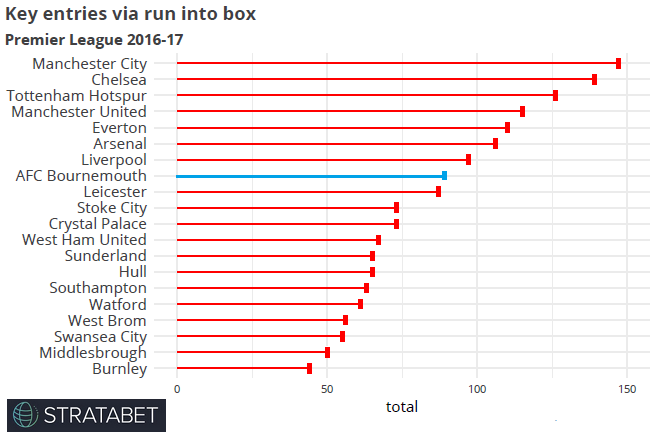
The seven teams that were ahead of them are the league's actual top seven, so in this regard Bournemouth are the best of the rest. The evidence points towards Howe telling his players to put their heads down and run when near the opposition box, and to some degree it’s working. Something he should be given praise for as most teams are dying for anything similar that separates them from the morass. Whether it’s a sustainable edge is another question entirely. One that depends on how thoroughly their opponents are scouting them and whether their coaching staff can drill it into them to just not foul.
Transfer business needs to be addressed because it’s been a bit of a bumpy ride in that department. There has been a degree of success. Benik Afobe, Josh King and Nathan Aké on loan were all agreeable moves. Problem is these bright spots have been in the margins of a wider, more confusing transfer picture.
Jordon Ibe - a player who, with the best will in the world, didn’t even flash much talent at Liverpool - was brought in for £15m. Even if he did turn out to be the absolute bee's knees Bournemouth were rumoured to have very generously offered Liverpool a buy-back clause, all but dooming the deal to be an overpaid loan at best and a complete waste at worst (Ibe played a shade over 1000 minutes in 2016/17, registering no goals or assists).
This week, as you’ve no doubt heard, they picked up Jermaine Defoe on a three-year deal from newly relegated Sunderland. There’s plenty of reason to believe that Defoe isn’t all he’s cracked up to be but let’s put that to side for a moment and assume for the sake of argument that the conventional wisdom (‘he gets you goals’) is correct on him. He’s 34-years-old, turning 35 in October yet has been signed up on a three-year deal.
Josh King alone scored 16 for Bournemouth in 16/17 as a primary option, not to mention Afobe and Callum Wilson’s contributions. Defoe had a whole team built around him last season and notched 15 goals, 5 of those being penalties (Is that it? Did they bring him in to take all these penalties they’re winning? He certainly didn't win any penalties himself last year). There's no case for him as a creation option either: Last season Defoe produced fewer key passes (20) in 3323 minutes than Afobe produced in 1454 minutes (23).
(While we're here: Bournemouth were dead last in terms of regaining the ball past their opposition's 18-yard-line via a turnover this season, and by a large margin too. Having a 35-year-old up front doing the pressuring will not help with generating those sorts of opportunities.)
Then you have all these players hanging around the squad seemingly without much purpose like Lys Mousset or Max Gradel. Howe has been loyal to his starting group of players, but left others apparently marginalised. Not to mention the strange Jack Wilshere experiment. It’s very hard to get a grasp on what the overall plan is, if one exists.
That’s Bournemouth in a nutshell really. Their supporters should probably feel relatively at ease as they head into a third year in the PL. The team’s overall profile is likely complete enough to expect safety for the near future, barring a freak season. An accomplishment that is fairly ahead of schedule for a club their size. Yet with a defence as dodgy as theirs that margin of error is is always going to be a bit slighter than you’d like. However, Aké and Begovic are decent defensive signings that could be the bedrock for good things to come and may well address this.
At the moment they scan as a side devoid of a direction outside of just keeping on keeping on. Cut out the head-scratcher signings, tighten up the defence and we could be looking at a Premier League mainstay. As it stands though, there's plenty to work on.
(Parts of this article were written with the aid of StrataData, which is property of Stratagem Technologies. StrataData powers the StrataBet Sports Trading Platform, in addition to StrataBet Premium Recommendations.)
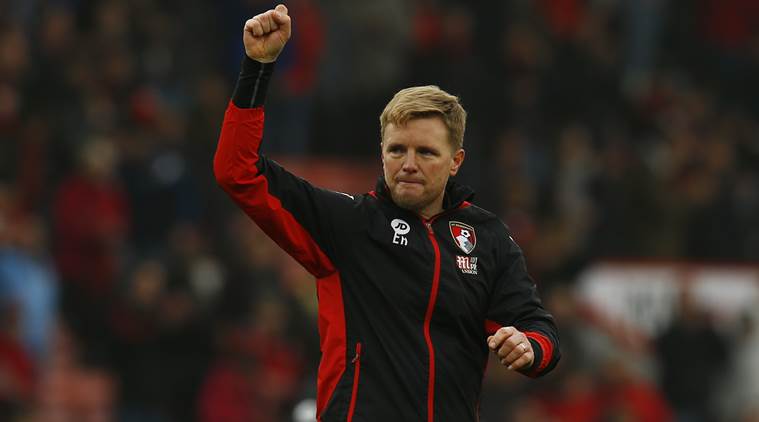
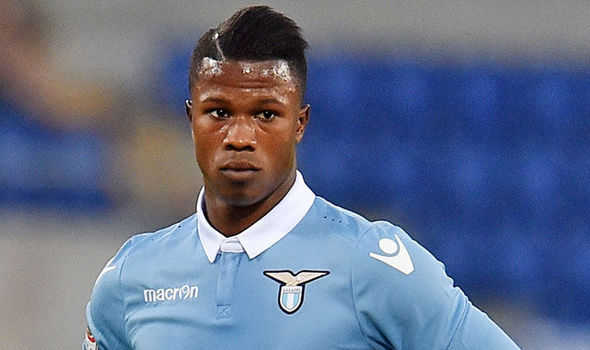
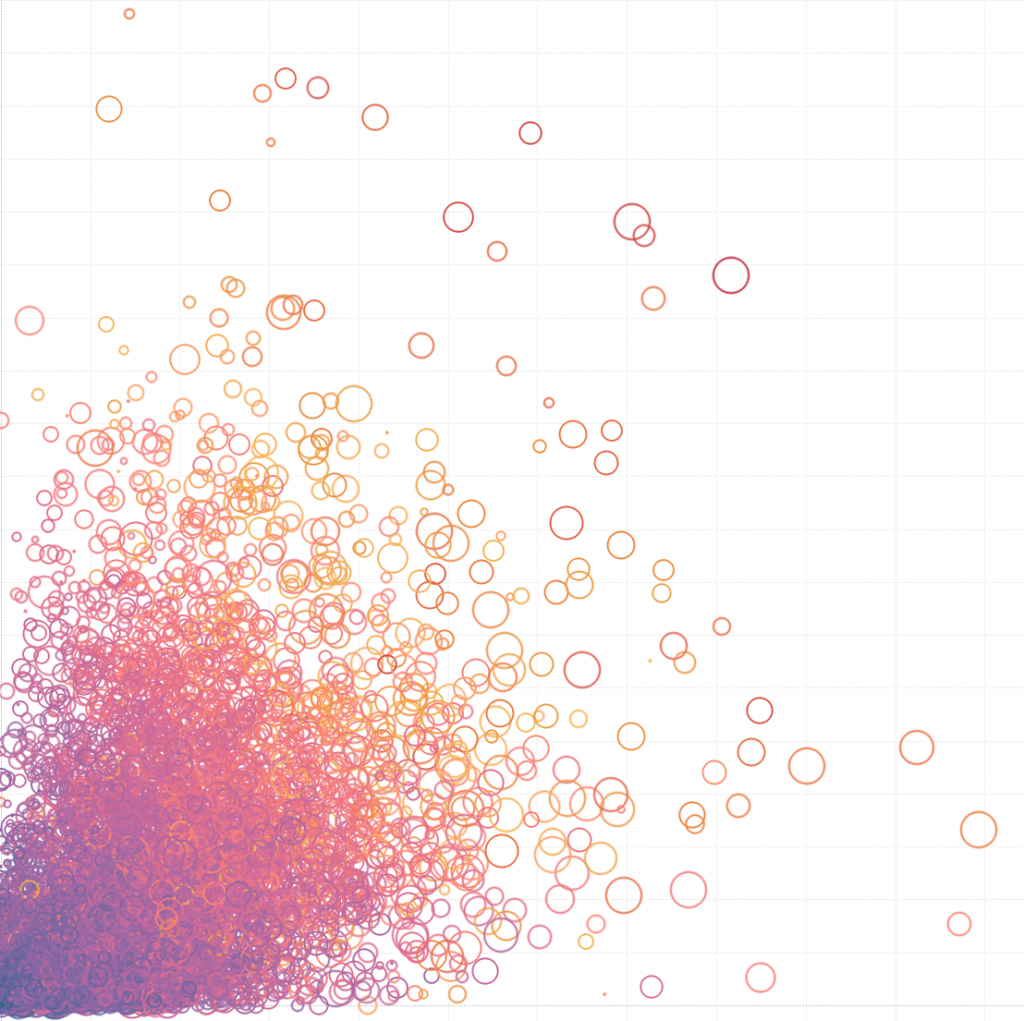 Wide forwards on a team with league title aspirations need to do three things
Wide forwards on a team with league title aspirations need to do three things 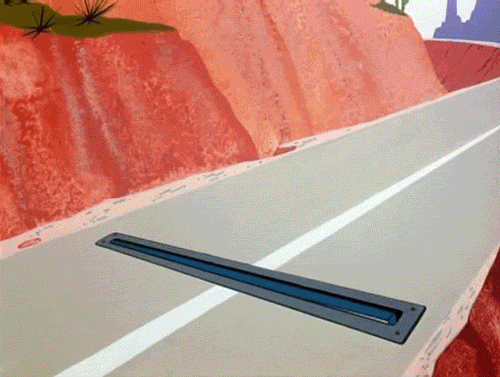 Because it’s Arsenal, they also need to be good passers. This is a huge ask, and in reality there are few players in the world who fit the requirements exactly. The first name that comes up on the list is Memphis Depay. *audible groans from the audience* Look guys, I’m just analysing the data and it says Memphis is very good and has a very rare skill set. *more shaking of heads. someone throws a tomato* AHEM! Given the inevitable complaints on this line of analysis from people who think he was bad at Manchester United despite the fact that as a team, they only took as many shots per game as Big Sam’s Sunderland, we’ll fast forward to other candidates. Salah? Taken. Marcos Asensio? Ha! Emil Forsberg? Not happenin'. Kingsley Coman? Just arrested on a domestic assault charge so maaaybe not. Bertrand Traore! Just moved to Lyon for a price that was scarcely believable when reported. Unsurprisingly, this is hard. How about this guy?
Because it’s Arsenal, they also need to be good passers. This is a huge ask, and in reality there are few players in the world who fit the requirements exactly. The first name that comes up on the list is Memphis Depay. *audible groans from the audience* Look guys, I’m just analysing the data and it says Memphis is very good and has a very rare skill set. *more shaking of heads. someone throws a tomato* AHEM! Given the inevitable complaints on this line of analysis from people who think he was bad at Manchester United despite the fact that as a team, they only took as many shots per game as Big Sam’s Sunderland, we’ll fast forward to other candidates. Salah? Taken. Marcos Asensio? Ha! Emil Forsberg? Not happenin'. Kingsley Coman? Just arrested on a domestic assault charge so maaaybe not. Bertrand Traore! Just moved to Lyon for a price that was scarcely believable when reported. Unsurprisingly, this is hard. How about this guy? 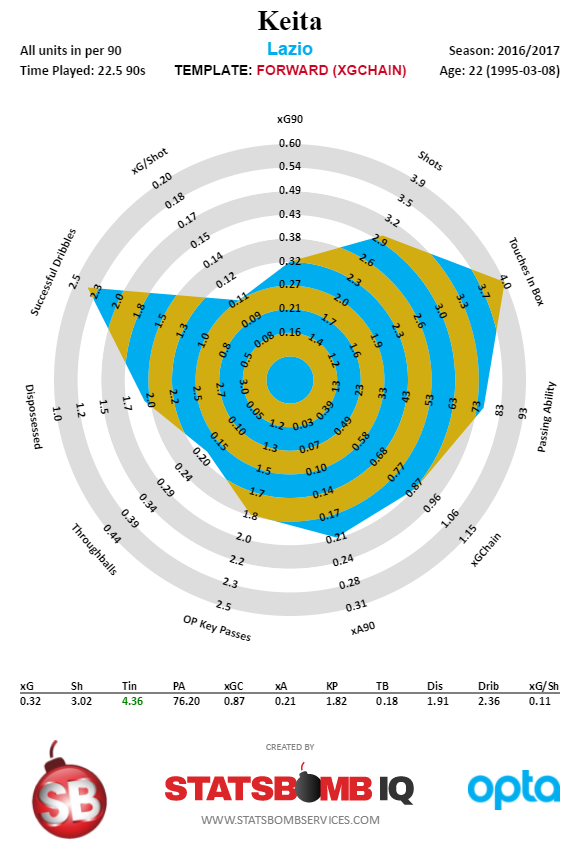 Can play left forward and center forward. Physically awesome. Ran hotter than his expected goals numbers last season, but the underlying numbers were still quite good. Plenty of meep and an absolute handful physically. Also only has one year left on his contract, so won’t be as expensive as other targets.
Can play left forward and center forward. Physically awesome. Ran hotter than his expected goals numbers last season, but the underlying numbers were still quite good. Plenty of meep and an absolute handful physically. Also only has one year left on his contract, so won’t be as expensive as other targets. 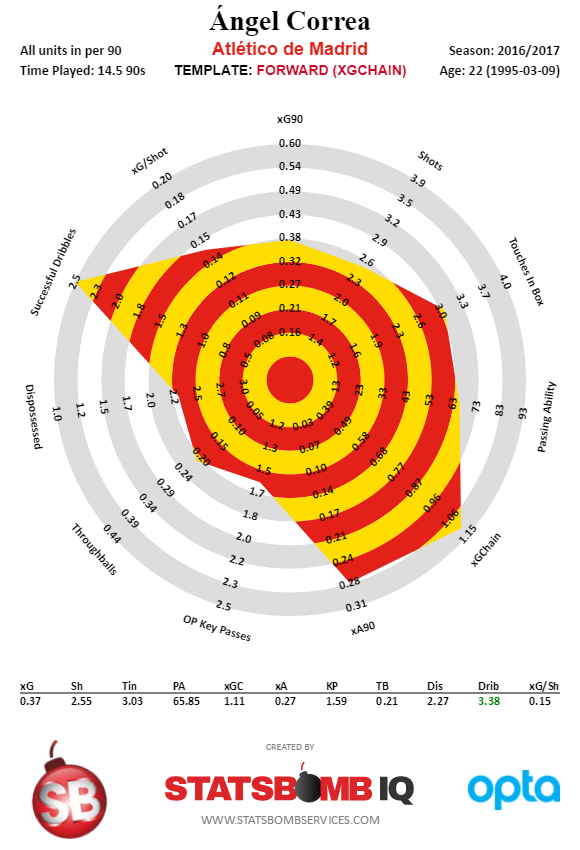 I feel like this kid gets zero headlines, but his stats are amazing. Plays everywhere behind the striker and almost fully two-footed. Excellent dribbler, and good strength for a smaller guy. Only has two years left on his deal at Atletico, so maybe now is the time to turn his head for bigger money. Atletico are a great team, but the Premier League can certainly pay him far more. The Dortmund Crew So Dortmund actually have three young players that would interest Arsenal. They probably won’t sell any of them, but Ousmane Dembele, Christian Pulisic, and Emre Mor all look like they are right on the cusp of being world class wide men (although Mor kind of plays everywhere).
I feel like this kid gets zero headlines, but his stats are amazing. Plays everywhere behind the striker and almost fully two-footed. Excellent dribbler, and good strength for a smaller guy. Only has two years left on his deal at Atletico, so maybe now is the time to turn his head for bigger money. Atletico are a great team, but the Premier League can certainly pay him far more. The Dortmund Crew So Dortmund actually have three young players that would interest Arsenal. They probably won’t sell any of them, but Ousmane Dembele, Christian Pulisic, and Emre Mor all look like they are right on the cusp of being world class wide men (although Mor kind of plays everywhere). 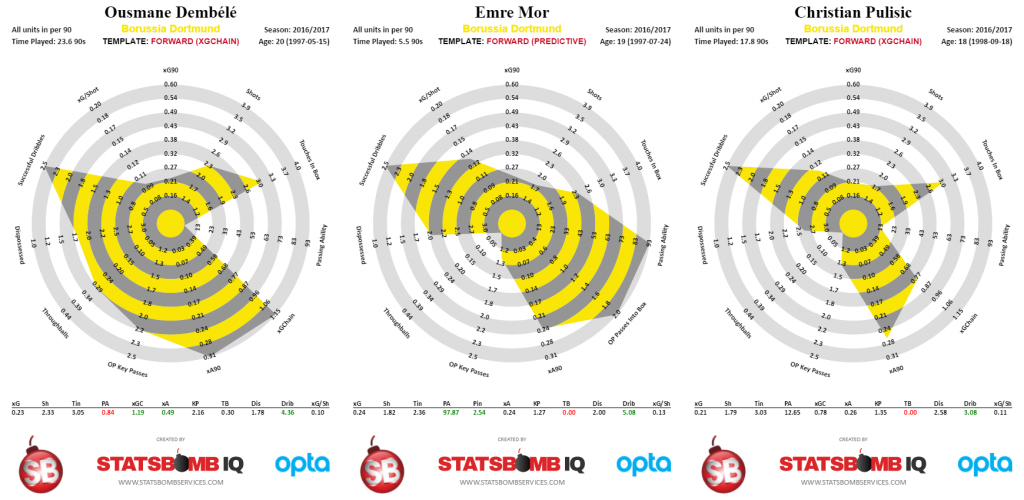 Dembele is one of those players where I don’t fully agree with the passing model. His high risk-high reward style is hard to credit properly, but he is lightning in a bottle on the pitch and already one of the best creative wide men in the world at age 20. Mor gets less hype, but his style feels inherently more Arsenal. Small sample in Bundesliga last year – he turns 20 in July – but he also completed nearly 6 dribbles a 90 last year in Denmark and passing ability is top notch. Finally you get The Great American Hope. Like with Dembele, Pulisic spoofs the passing model a bit by being another high risk-high reward player. By signing Pulisic, Arsenal would not only get a great young player that fills a need for the club, they would also dramatically increase American media attention for the club. All good, all slightly different, none very likely to move. Sigh. Now we hit the squiffy bits. This is the problem with transfer shopping in a busy market without the buying power that Manchester United or Real Madrid have. Many years you actually need to take risks. Perfect players for your squad/system/needs are not available. Thus you end up making calculated gambles – often with younger players that have good baselines – that they may develop into something special. This is exactly what Dortmund are doing right now and it is absolutely the right strategy. It’s also what Arsenal should have been doing since the moment they bought StatsDNA, but they have not. And the thing is, so many of these risks are easy to justify. Mane, Sabitzer, Timo Werner, de Bruyne, Depay, Eriksen, Dybala… all young players who had clear stats profiles that they were likely to be good to great in the future. Yes, some don’t work out – that’s why they are risks – but if you can’t afford to buy elite players any other way, then you need to take some gambles just to continue competing. The following guys have more risk involved and might be less obvious targets, but they do have interesting output. Two from Brugge
Dembele is one of those players where I don’t fully agree with the passing model. His high risk-high reward style is hard to credit properly, but he is lightning in a bottle on the pitch and already one of the best creative wide men in the world at age 20. Mor gets less hype, but his style feels inherently more Arsenal. Small sample in Bundesliga last year – he turns 20 in July – but he also completed nearly 6 dribbles a 90 last year in Denmark and passing ability is top notch. Finally you get The Great American Hope. Like with Dembele, Pulisic spoofs the passing model a bit by being another high risk-high reward player. By signing Pulisic, Arsenal would not only get a great young player that fills a need for the club, they would also dramatically increase American media attention for the club. All good, all slightly different, none very likely to move. Sigh. Now we hit the squiffy bits. This is the problem with transfer shopping in a busy market without the buying power that Manchester United or Real Madrid have. Many years you actually need to take risks. Perfect players for your squad/system/needs are not available. Thus you end up making calculated gambles – often with younger players that have good baselines – that they may develop into something special. This is exactly what Dortmund are doing right now and it is absolutely the right strategy. It’s also what Arsenal should have been doing since the moment they bought StatsDNA, but they have not. And the thing is, so many of these risks are easy to justify. Mane, Sabitzer, Timo Werner, de Bruyne, Depay, Eriksen, Dybala… all young players who had clear stats profiles that they were likely to be good to great in the future. Yes, some don’t work out – that’s why they are risks – but if you can’t afford to buy elite players any other way, then you need to take some gambles just to continue competing. The following guys have more risk involved and might be less obvious targets, but they do have interesting output. Two from Brugge 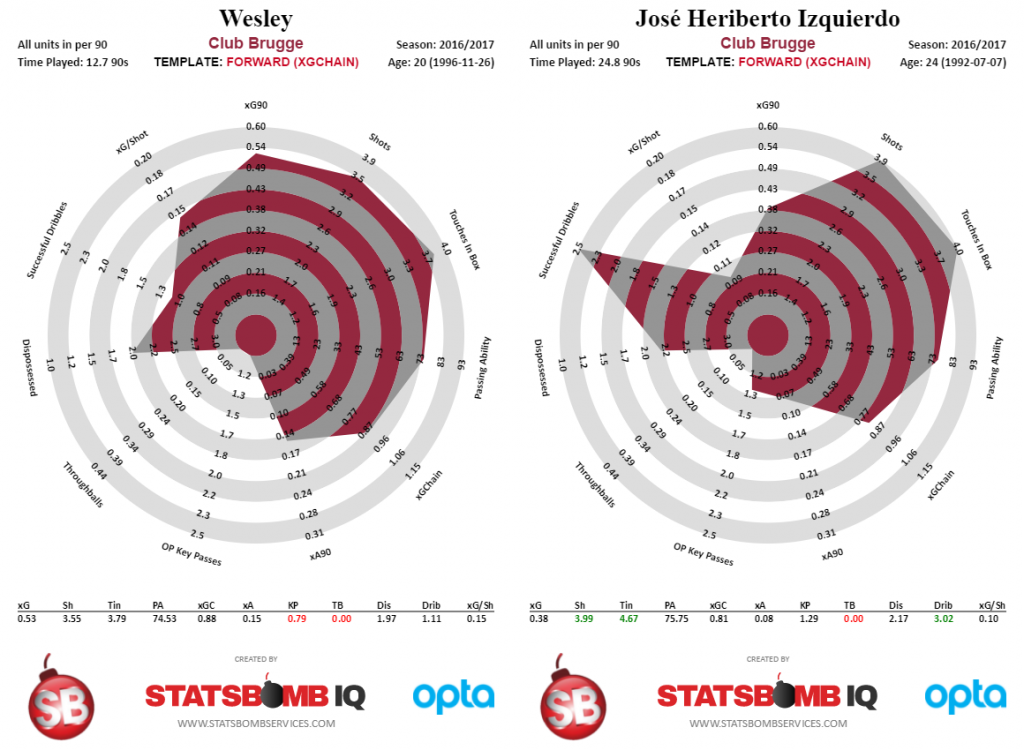 One big man, one small. Wesley is a CF who used to be at Overheul-favorite Trencin, but posted big numbers in a half season at Brugge. Izquierdo is a tiny Colombian whose game scouts a bit like a discount Alexis. He's been on the "Interesting" list for a few years now. Shooting locations could use some work, but the rest of his game is probably good enough for a move to the Premier League. (Yes, they are both South American so there may be some work permit struggles, but grease the wheels already!) Eredivisie The most divisive talent league in world football. When the average age is this low, players at full maturity have an easier time. Defending isn't great overall. The quality of the top of the league is very different from the bottom, and that also causes issues when evaluating talent who is effectively beating up on League One players instead of Europa League finalist players. THAT SAID… there is talent in the league and it is undeniable. There are four guys that Arsenal should take a long, hard look at right now and hope that they turn into something special for the future. The first three are from Ajax. Dolberg isn’t ready to lead a Premier League line, but he is already special. Teammates David Neres and Justin Kluivert also look very interesting, despite their best games coming against teams that were... uh... (BE POLITE)... not great, Bob? I usually hate big fees paid for Brazilians, but Neres – like countryman Gabriel Jesus – looks like he could end up being an astute purchase. [Small sample and weak competition caveats ALL over this one, and yet when you trip the rarely-if-ever-tripped Messi Warning Bell, you definitely get a closer look.]
One big man, one small. Wesley is a CF who used to be at Overheul-favorite Trencin, but posted big numbers in a half season at Brugge. Izquierdo is a tiny Colombian whose game scouts a bit like a discount Alexis. He's been on the "Interesting" list for a few years now. Shooting locations could use some work, but the rest of his game is probably good enough for a move to the Premier League. (Yes, they are both South American so there may be some work permit struggles, but grease the wheels already!) Eredivisie The most divisive talent league in world football. When the average age is this low, players at full maturity have an easier time. Defending isn't great overall. The quality of the top of the league is very different from the bottom, and that also causes issues when evaluating talent who is effectively beating up on League One players instead of Europa League finalist players. THAT SAID… there is talent in the league and it is undeniable. There are four guys that Arsenal should take a long, hard look at right now and hope that they turn into something special for the future. The first three are from Ajax. Dolberg isn’t ready to lead a Premier League line, but he is already special. Teammates David Neres and Justin Kluivert also look very interesting, despite their best games coming against teams that were... uh... (BE POLITE)... not great, Bob? I usually hate big fees paid for Brazilians, but Neres – like countryman Gabriel Jesus – looks like he could end up being an astute purchase. [Small sample and weak competition caveats ALL over this one, and yet when you trip the rarely-if-ever-tripped Messi Warning Bell, you definitely get a closer look.] 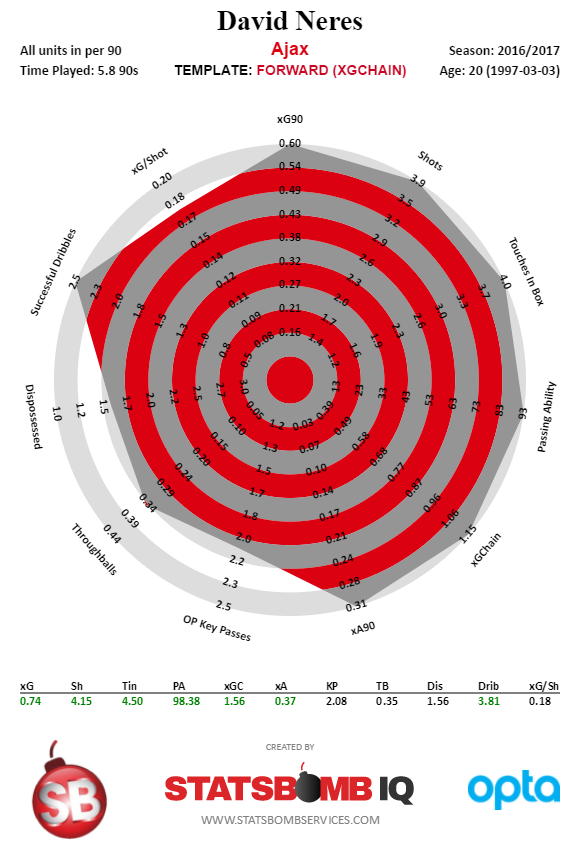 I’m not saying definitely try to buy him. What I am saying is do a whole lot more scouting and research and THEN make a decision. The last guy I find super intriguing is Steven Bergwijn at PSV. Some of the same caveats as above apply, but his output is interesting enough that once again, you should take a very long look and see if everything else adds up.
I’m not saying definitely try to buy him. What I am saying is do a whole lot more scouting and research and THEN make a decision. The last guy I find super intriguing is Steven Bergwijn at PSV. Some of the same caveats as above apply, but his output is interesting enough that once again, you should take a very long look and see if everything else adds up. 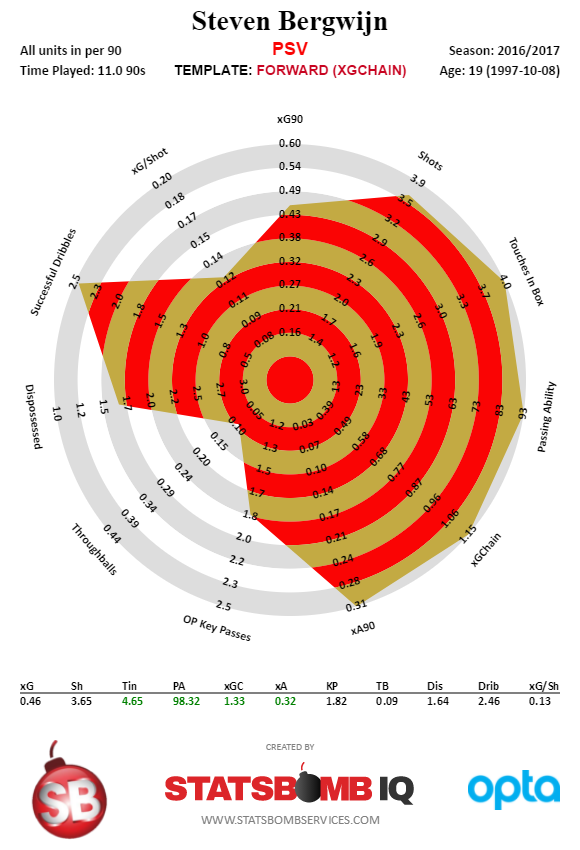 Thomas Lemar In lieu of boring right back recommendations, I wanted to just take a quick moment to give my feedback on Thomas Lemar from Monaco. He’s excellent, and I’ve been interested in him since his Caen days. Passing ability matches up with what we’ve come to expect from Arsenal, he’s good in space, and he’s fast. The problem – if you want to call it that – is the bulk of his assists last season either came via set pieces or on crosses to the far post on the break. I’m not sure I would let that stop me from signing him. He’s a lovely player. But I’m just not sure Arsenal’s style of play or general indifference on set pieces really maximises his skills. Conclusion The reason I started writing this was general frustration. I wanted to map out what was possible this year in terms of Arsenal upgrading the squad enough to contend for a title. To me, Arsenal feel a bit like Manchester United as we entered the end of the Fergie era, except without the Fergie bit (or the Pulis-like set piece execution from Fergie's last two seasons). The squad has aged in a number of key positions. The academy no longer provides talented replacements. More money has been spent from time to time, but overall quality seems weaker than a number of competitors, including (and unusually) Spurs and Liverpool. Manchester United spent something close to £500M in the last three years to try and rebuild that old Fergie squad to a title-contending standard, and while they probably paid too much and had some notable misses, the fact remains that the investment in new players was necessary. With Arsenal… who knows? A couple of scenarios to ponder Max Money(£) Mbappe – 110M Naby Keita – 70M Memphis – 55M Ousmane Dembele – 70M Right Back – 40M More Sensible But Good (£) Lacazette – 50M Keita Balde Diao – 35M Angel Correa – 45M Jorginho - 45M Right Back 25M Please God, No (Hauntingly Likely) Alexis Leaves +60M Ox Leaves +35M Ozil sees out contract - 0 Joel Campbell Comes Back – 0 Theo - 0 Welbz + Giroud – 0 The Interminable Contract of Mathieu Debuchy - 0 Thomas Lemar! - 25M (release clause) Regardless of how it works out, Arsenal's summer is wildly complex. Two of their best players are pushing for new, big-money deals toward the end of their careers and with one year left on their contracts. The outcomes there have knock-on effects for every other piece of business Arsenal will do this summer. As a long-time fan, I have been conditioned to hope for the best but to expect the worst. As someone who does transfer evaluations professionally, I have to say that the possible outcomes are certainly better than I feared. I doubt we'll see any of the high end deals happen at either North London club, but Arsenal could still do a lot of good business despite seemingly being quite late to the party. Or... they could sit on their hands, penny pinch on prices and wages, and end up with pretty much nothing, just like the olden days. Thanks for listening! Ted Knutson @mixedknuts ted@statsbombservices.com
Thomas Lemar In lieu of boring right back recommendations, I wanted to just take a quick moment to give my feedback on Thomas Lemar from Monaco. He’s excellent, and I’ve been interested in him since his Caen days. Passing ability matches up with what we’ve come to expect from Arsenal, he’s good in space, and he’s fast. The problem – if you want to call it that – is the bulk of his assists last season either came via set pieces or on crosses to the far post on the break. I’m not sure I would let that stop me from signing him. He’s a lovely player. But I’m just not sure Arsenal’s style of play or general indifference on set pieces really maximises his skills. Conclusion The reason I started writing this was general frustration. I wanted to map out what was possible this year in terms of Arsenal upgrading the squad enough to contend for a title. To me, Arsenal feel a bit like Manchester United as we entered the end of the Fergie era, except without the Fergie bit (or the Pulis-like set piece execution from Fergie's last two seasons). The squad has aged in a number of key positions. The academy no longer provides talented replacements. More money has been spent from time to time, but overall quality seems weaker than a number of competitors, including (and unusually) Spurs and Liverpool. Manchester United spent something close to £500M in the last three years to try and rebuild that old Fergie squad to a title-contending standard, and while they probably paid too much and had some notable misses, the fact remains that the investment in new players was necessary. With Arsenal… who knows? A couple of scenarios to ponder Max Money(£) Mbappe – 110M Naby Keita – 70M Memphis – 55M Ousmane Dembele – 70M Right Back – 40M More Sensible But Good (£) Lacazette – 50M Keita Balde Diao – 35M Angel Correa – 45M Jorginho - 45M Right Back 25M Please God, No (Hauntingly Likely) Alexis Leaves +60M Ox Leaves +35M Ozil sees out contract - 0 Joel Campbell Comes Back – 0 Theo - 0 Welbz + Giroud – 0 The Interminable Contract of Mathieu Debuchy - 0 Thomas Lemar! - 25M (release clause) Regardless of how it works out, Arsenal's summer is wildly complex. Two of their best players are pushing for new, big-money deals toward the end of their careers and with one year left on their contracts. The outcomes there have knock-on effects for every other piece of business Arsenal will do this summer. As a long-time fan, I have been conditioned to hope for the best but to expect the worst. As someone who does transfer evaluations professionally, I have to say that the possible outcomes are certainly better than I feared. I doubt we'll see any of the high end deals happen at either North London club, but Arsenal could still do a lot of good business despite seemingly being quite late to the party. Or... they could sit on their hands, penny pinch on prices and wages, and end up with pretty much nothing, just like the olden days. Thanks for listening! Ted Knutson @mixedknuts ted@statsbombservices.com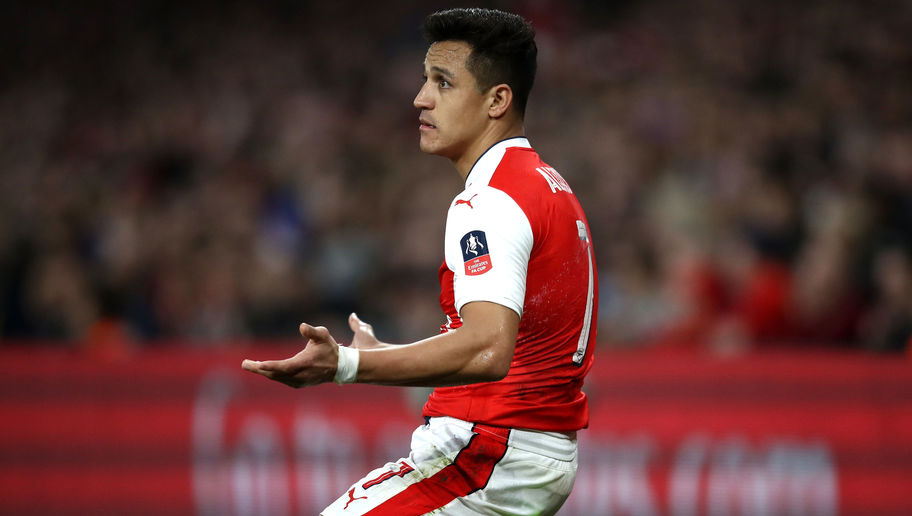
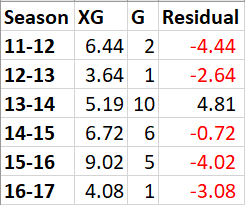 “One of these things is not like the other… one of these things is not the same.” So his greatest strength is getting into excellent finishing positions. And his biggest weakness is being a poor finisher. That’s a pretty cruel tradeoff. If this were a role-playing game, you’d just say fuck it, and re-roll. The other issue with current Aaron Ramsey is the defensive output. I’m not sure he’s a two-way player any more. Part of this may come down to role – he has played wide or more as a 10 in recent seasons – but the Ramsey that everyone fell in love with were the 12-13 and 13-14 versions that had him blowing up play constantly in addition to attacking. Modern Rambo does not do this. If he’s not capable of doing that, then Arsenal need a different option to be able to play Wenger’s midfield 2. If he is capable of doing this, then Arsenal desperately need him to start doing so again, because a midfield that only has Xhaka or Coquelin doing the defensive work is unlikely to win the league. Finally we get to right back. Pop quiz! Please match the following players with the number of possession-adjusted tackles they made per90 last season.
“One of these things is not like the other… one of these things is not the same.” So his greatest strength is getting into excellent finishing positions. And his biggest weakness is being a poor finisher. That’s a pretty cruel tradeoff. If this were a role-playing game, you’d just say fuck it, and re-roll. The other issue with current Aaron Ramsey is the defensive output. I’m not sure he’s a two-way player any more. Part of this may come down to role – he has played wide or more as a 10 in recent seasons – but the Ramsey that everyone fell in love with were the 12-13 and 13-14 versions that had him blowing up play constantly in addition to attacking. Modern Rambo does not do this. If he’s not capable of doing that, then Arsenal need a different option to be able to play Wenger’s midfield 2. If he is capable of doing this, then Arsenal desperately need him to start doing so again, because a midfield that only has Xhaka or Coquelin doing the defensive work is unlikely to win the league. Finally we get to right back. Pop quiz! Please match the following players with the number of possession-adjusted tackles they made per90 last season. 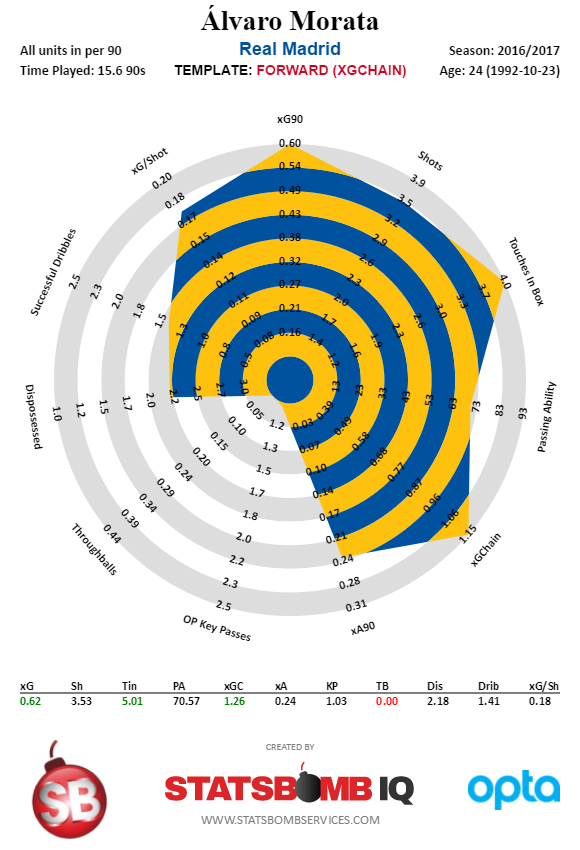 After those two guys, things completely fall apart. None of the big names are gettable or fit the age profile we want. If Arsenal are spunking big money on a top tier forward, he needs to be able to lead the line for the next five years. Additionally, they don’t need another good backup forward, which is what Lucas Perez was for them last year. Lacazette is the next biggest name on the rumour mill, and
After those two guys, things completely fall apart. None of the big names are gettable or fit the age profile we want. If Arsenal are spunking big money on a top tier forward, he needs to be able to lead the line for the next five years. Additionally, they don’t need another good backup forward, which is what Lucas Perez was for them last year. Lacazette is the next biggest name on the rumour mill, and 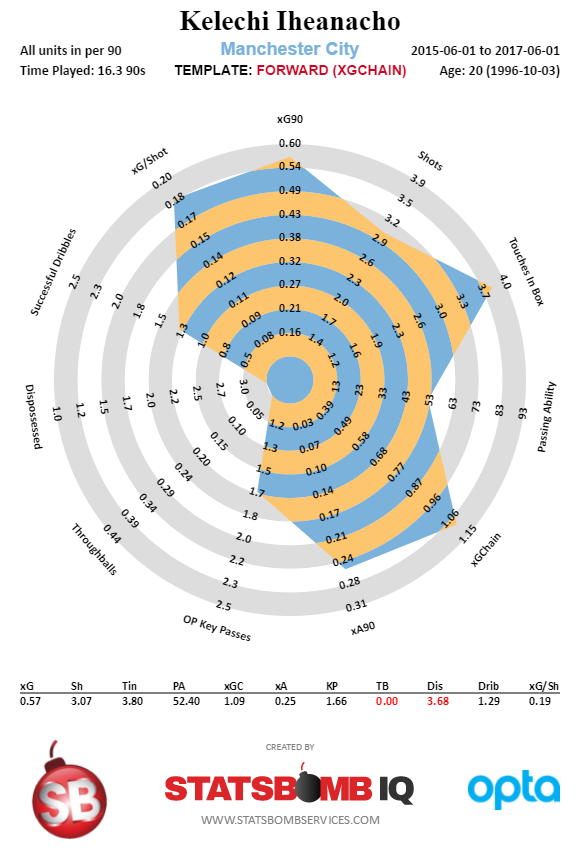 The above is a combined plot across the last two seasons of Iheanacho at Manchester City. He's really quite good. The other player owned by an English club that I would go after is Tammy Abraham. He had an awesome season last year in the Championship on a pretty bad team, he has great size, pace, and strength, he can play both wide and central, and he can pass. Would I pay £30M in the current market for Abraham? Easily. £40M? Probably. £50M? Eh. As long as there were no buybacks and the sell-on clause was reasonable I would think long and hard about it. Yes, it would be a gamble, but I think Abraham is a more versatile player than Lukaku at the same age, and his upside is probably even bigger. No way Chelsea sell him to Arsenal, by the way, so it’s all just pie in the sky. On the other hand, I pitched a Traore and Abraham for Alexis swap to
The above is a combined plot across the last two seasons of Iheanacho at Manchester City. He's really quite good. The other player owned by an English club that I would go after is Tammy Abraham. He had an awesome season last year in the Championship on a pretty bad team, he has great size, pace, and strength, he can play both wide and central, and he can pass. Would I pay £30M in the current market for Abraham? Easily. £40M? Probably. £50M? Eh. As long as there were no buybacks and the sell-on clause was reasonable I would think long and hard about it. Yes, it would be a gamble, but I think Abraham is a more versatile player than Lukaku at the same age, and his upside is probably even bigger. No way Chelsea sell him to Arsenal, by the way, so it’s all just pie in the sky. On the other hand, I pitched a Traore and Abraham for Alexis swap to 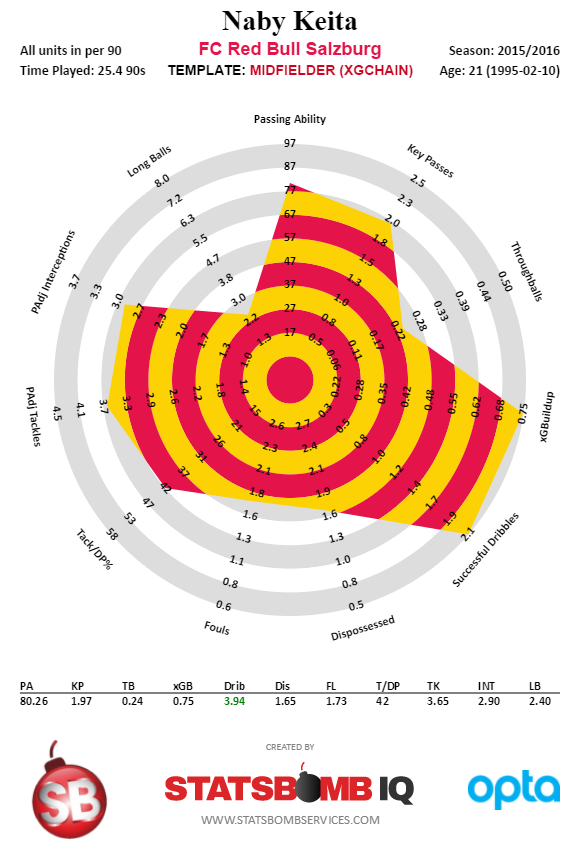 One year on, Naby finished 2nd in the German Bundesliga with RB Leipzig in their first ever season in the Bundesliga. From what I hear, there is no chance he’s moving this summer. My second choice for midfield dynamo would have been Corentin Tolisso of Lyon. Unfortunately, last week Tolisso made a €50M move to Bayern Munich. Du schnoozen, du loozen, ja? After those two guys, things get complicated. There just aren’t that many players in the world who fit the “ridiculously well-rounded midfielder” skill set that Arsenal require, so you start to make hard choices. My opinion is that we can sacrifice a bit of attacking output in exchange for guys who defend. Longer term, maybe we are looking for more of a Santi instead of a Ramsey, but honestly we’ll be perfectly happy with someone really good. Three names…
One year on, Naby finished 2nd in the German Bundesliga with RB Leipzig in their first ever season in the Bundesliga. From what I hear, there is no chance he’s moving this summer. My second choice for midfield dynamo would have been Corentin Tolisso of Lyon. Unfortunately, last week Tolisso made a €50M move to Bayern Munich. Du schnoozen, du loozen, ja? After those two guys, things get complicated. There just aren’t that many players in the world who fit the “ridiculously well-rounded midfielder” skill set that Arsenal require, so you start to make hard choices. My opinion is that we can sacrifice a bit of attacking output in exchange for guys who defend. Longer term, maybe we are looking for more of a Santi instead of a Ramsey, but honestly we’ll be perfectly happy with someone really good. Three names… 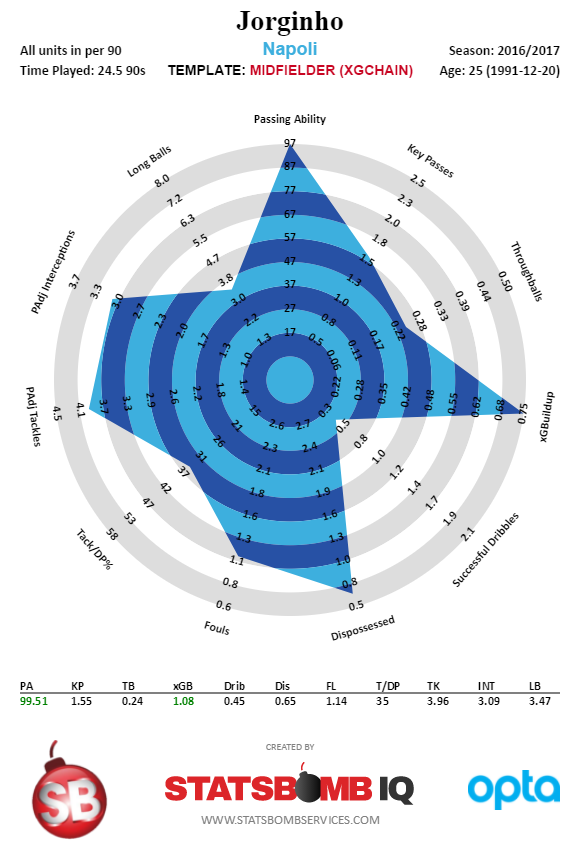
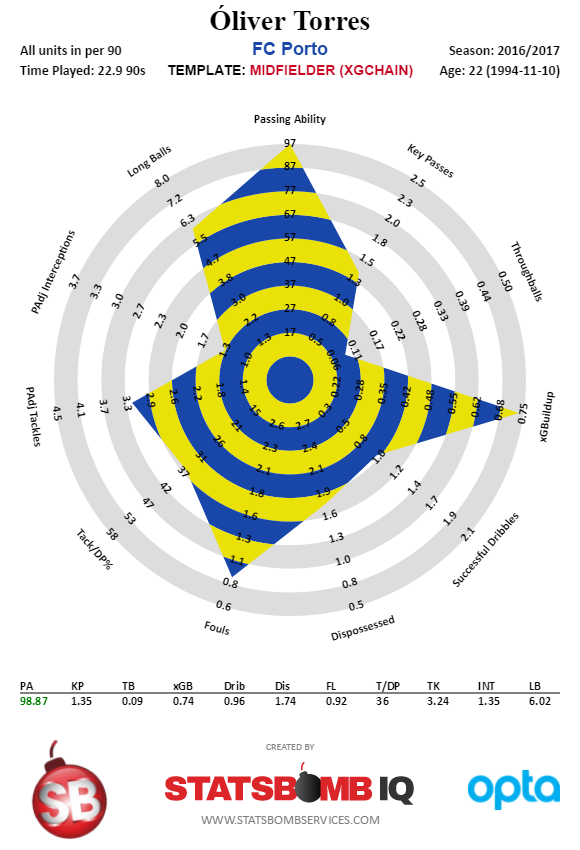
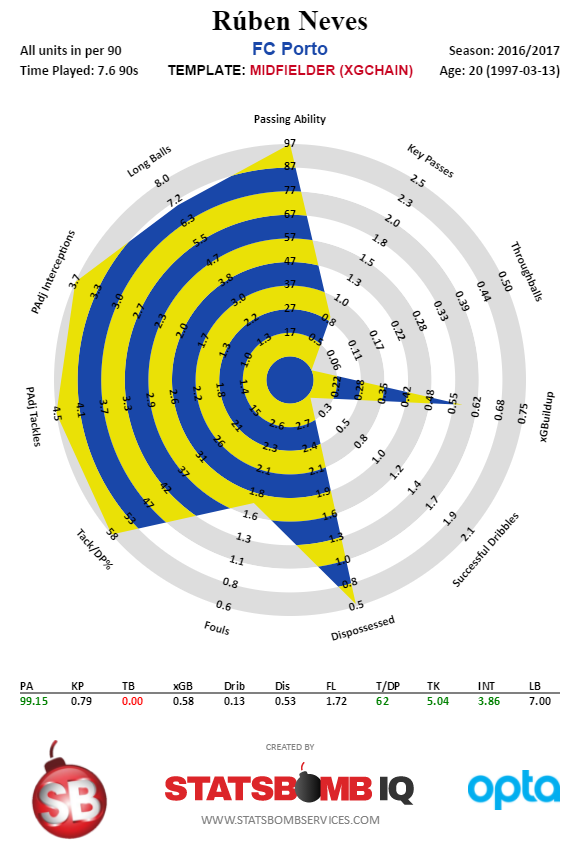 I don’t think Arsenal can get a Rabiot or a Kovacic, but one of these three guys might be possible. Jorginho is probably the best right now. Torres might be the best attacking player of the three. And Neves is still young, but almost certainly a midfield prodigy. Verdict: I have no clue. I think the most likely scenario is that Arsene chooses to continue on with his current midfield and focus on other areas of need. La Pausa This is already long, so I’m going to break it here and continue next week with suggestions for the two wide forward positions, a right back, and some tactical discussion to wrap it up. Thanks for reading! Ted Knutson @mixedknuts ted@statsbombservices.com
I don’t think Arsenal can get a Rabiot or a Kovacic, but one of these three guys might be possible. Jorginho is probably the best right now. Torres might be the best attacking player of the three. And Neves is still young, but almost certainly a midfield prodigy. Verdict: I have no clue. I think the most likely scenario is that Arsene chooses to continue on with his current midfield and focus on other areas of need. La Pausa This is already long, so I’m going to break it here and continue next week with suggestions for the two wide forward positions, a right back, and some tactical discussion to wrap it up. Thanks for reading! Ted Knutson @mixedknuts ted@statsbombservices.com 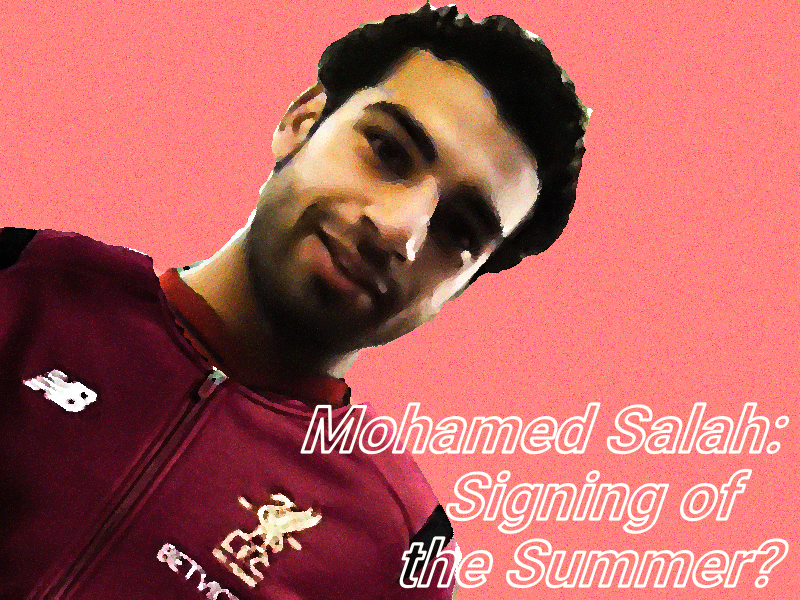
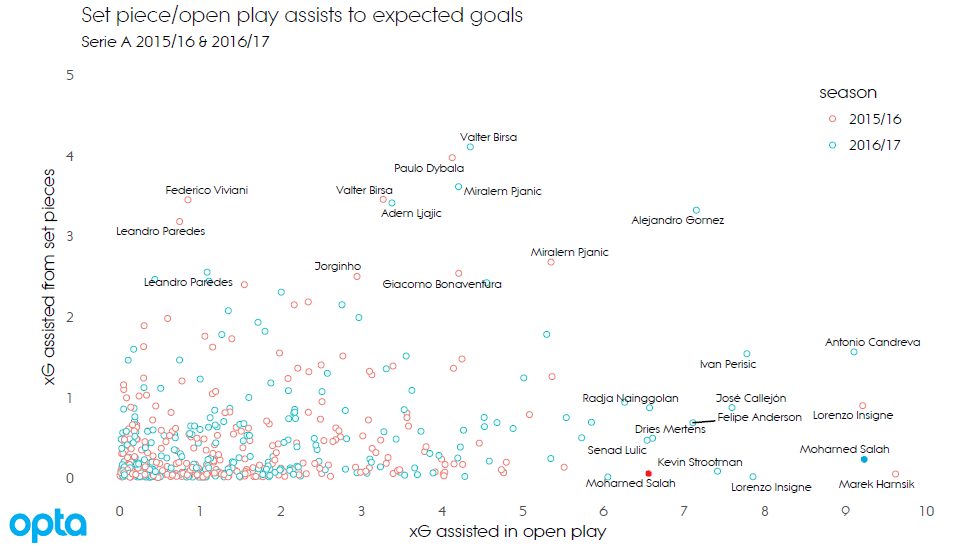
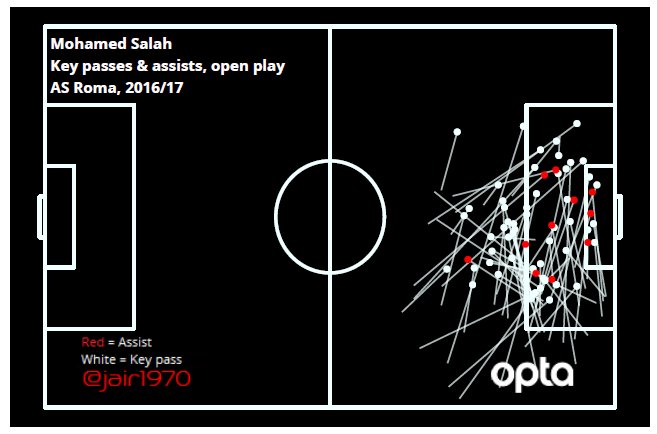
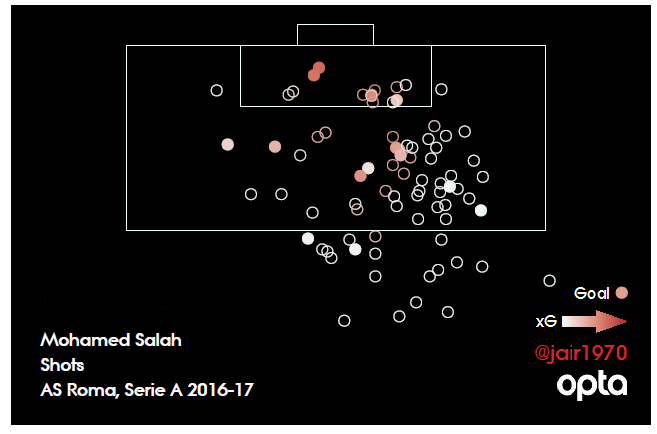
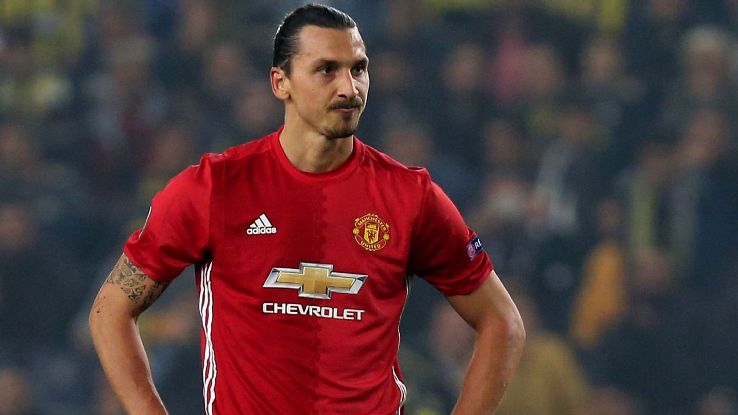
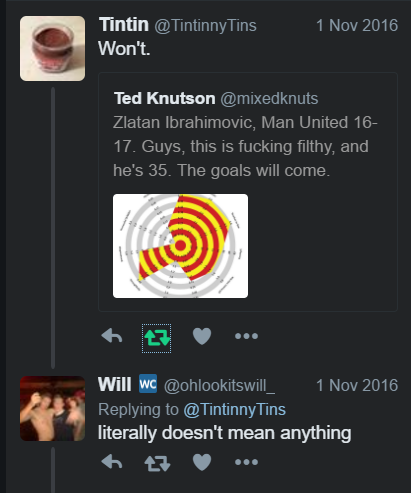
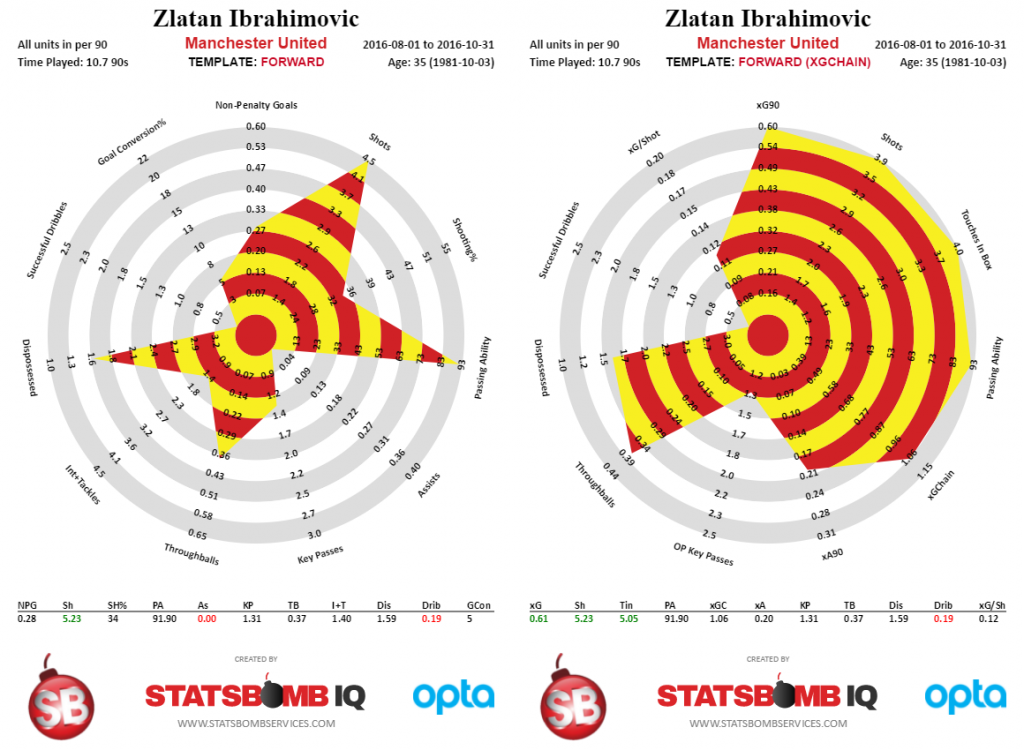
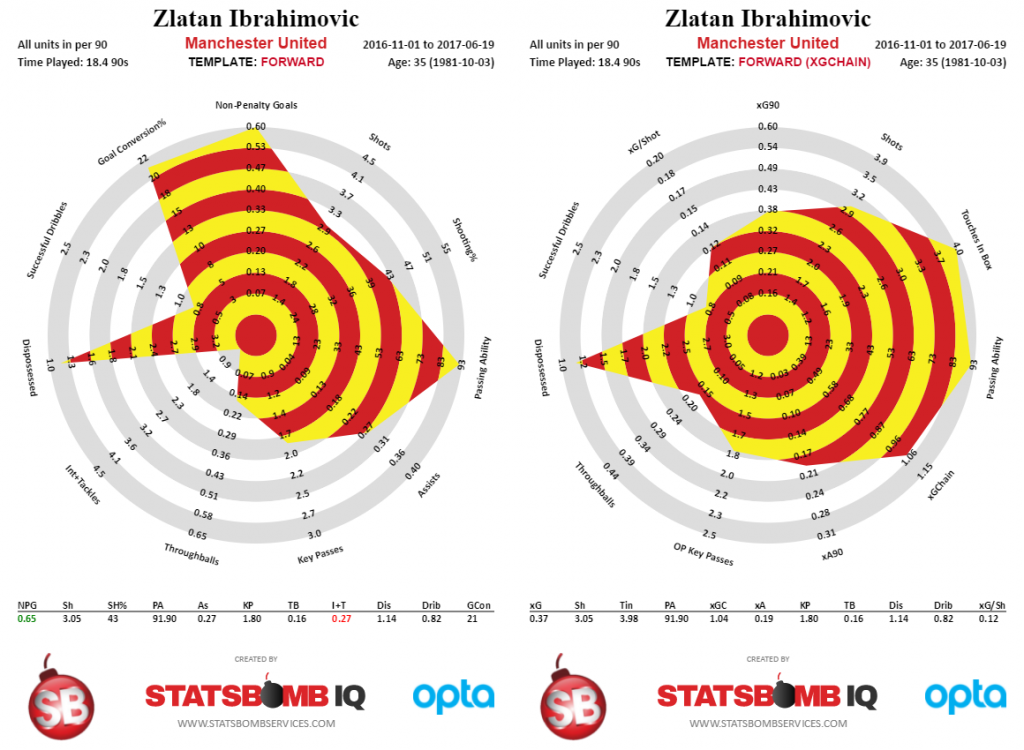
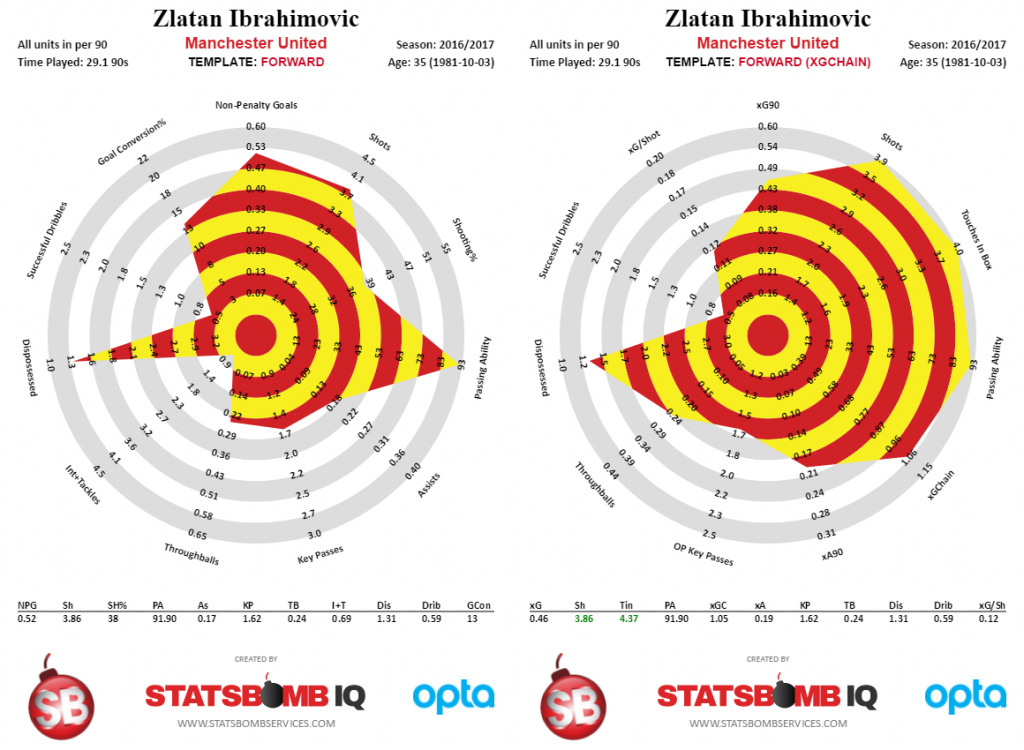
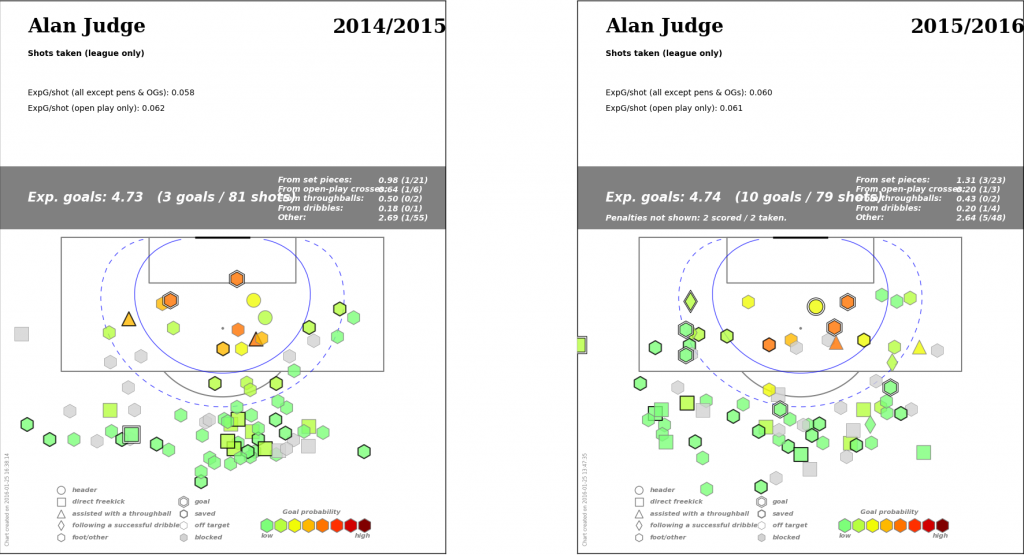

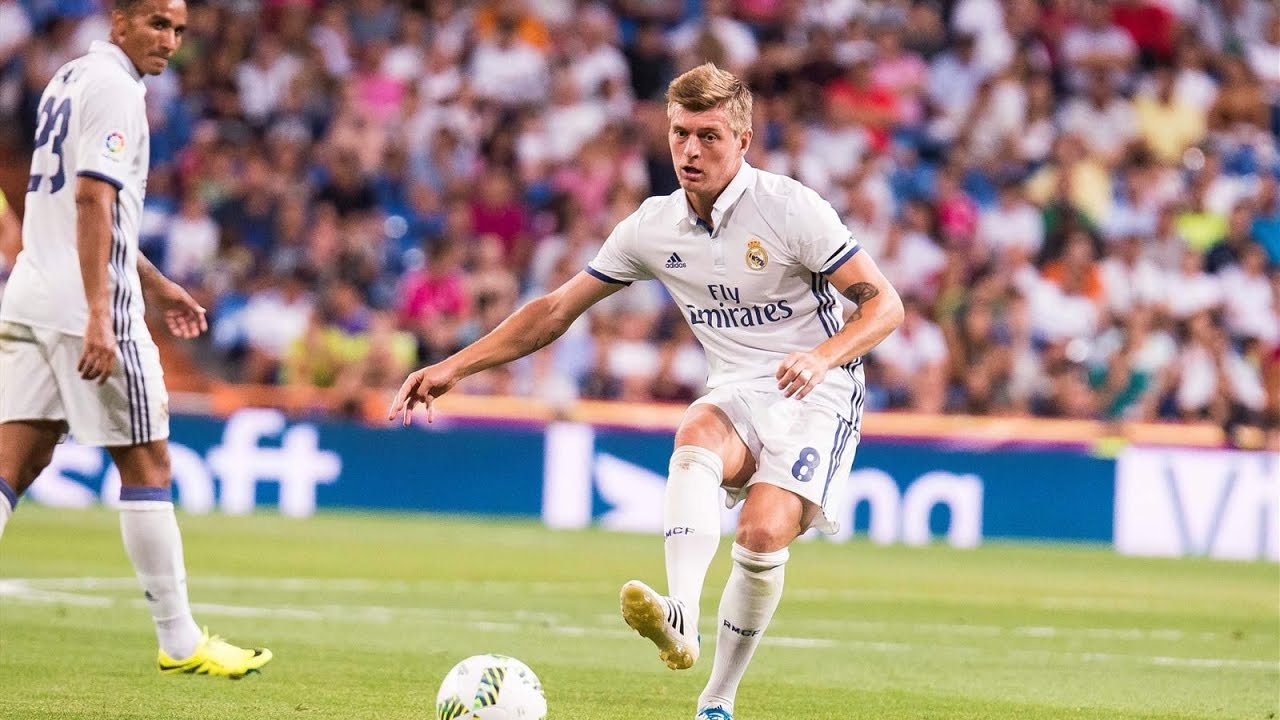
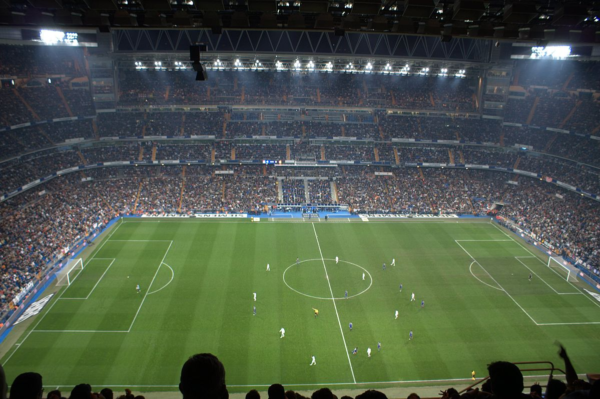
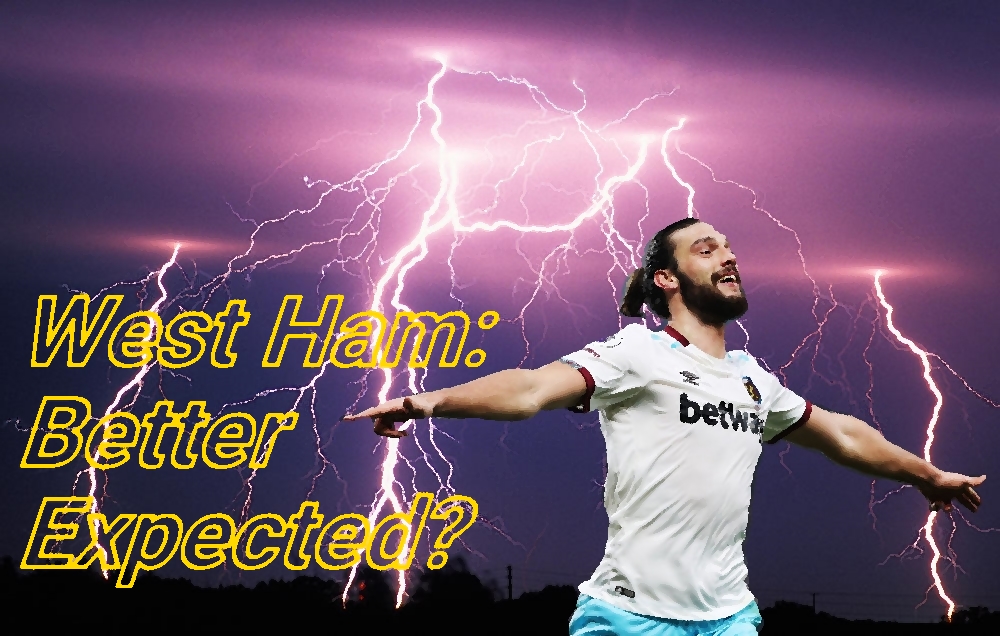
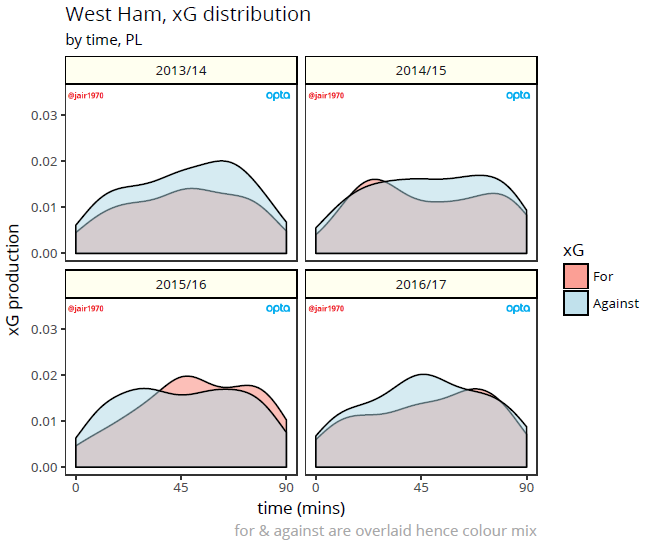 The simple tale is thus: West Ham during Bilic’s reign, and before, have projected as a mid table outfit, which is more or less what they were under Sam Allardyce. In 2015-16 they got the breaks and landed high in the table, in 2016-17 they didn’t get the breaks and eventually lugged their way up into the midfield. The difference between Allardyce and Bilic in this regard was that Allardyce was consistent in defying relatively mediocre metrics to land safe, primarily through overshooting against defensive expectation. Each of the last three seasons has seen a big focus in attack on heading the ball--to be expected for an Allardyce team with Andy Carroll in the ranks but it has continued with Bilic. A third of expected goals generated in 2014-15 were via the headed route, and a quarter in each of Bilic's seasons, all compared to a league average of about 17 to 18%. *As an aside/curio, Michail Antonio scored six headers in the first 12 league games of the season (to add to 6 more from the back half of 2015-16), then only managed seven headed efforts in total for the remaining 17 starts he made, none of which landed on target. I guess teams started to mark him. Bilic has had two seasons of high variance, one positive, another the opposite and the staid control that Allardyce inevitably brought has been replaced by a more unstable outlook. Formation indecision, soft centre Part of the problem for the team in 2016-17 was an inability to settle on a formation. West Ham finished the season with a run of games playing three at the back, a basis that they had previously tried and ultimately abandoned after their very slow start. Perhaps Bilic was unsure how to set up his team to get the best out of them? They were uniformly terrible against the top six and went 1-2-9 with the Tottenham result the only victory. They played an even six games apiece with a back three and a back four. With a back three they got steamrollered at home 0-4 by Liverpool and 1-5 by Arsenal, with a back four, Man City, Chelsea and Man Utd all arrived and won, though with less dominating shot profiles. Nine times across the season, Bilic switched between the three and the four but results remained erratic, with no great overarching pattern emerging, perhaps until the end. But if we keep digging, we find they achieved eight clean sheets from just 16 games with the three centre backs (compared to two from 22 with four at the back), and against their peers conceded just four goals total in ten games. Now this begs the question: does this mean Pablo Zabaleta’s aging legs will be utilised at wing back? Or will the formation changes continue? The three has become fashionable in the league once more, in the wake of Antonio Conte’s usage, but West Ham had tried it to little avail on three occasions in 2015-16. Overall Bilic’s team has struggled to create an identity, and his relentless tweaking has not helped here. Regardless of formation, it seems the defence wasn’t always in step. Only Sunderland conceded more chances than West Ham from logged completed throughballs--25 to West Ham’s 18--and both teams conceded a league high seven times from such opportunities. These are relatively scarce events and liable to fluctuate but nonetheless it represented double the volume of 2015-16 and a headscratcher for their manager. Retained existence in the Premier League will always be the first target, and last season's early season scares showed that they aren't immune from that yet, but much more should be the aim. What factors are hindering that progress? Transfers and continuity The specific performance conditions that Allardyce effected felt like they had a ceiling, and moving on from him was a positive move. Bilic’s first season indicated that he might have been a good appointment, and he is still carrying just enough kudos to justify the continuity of retaining him into 2017-18, but that doesn’t get to the crux of the issue. The club has failed to progress on the field and one of the primary issues here has been its short sighted use of the transfer market. Until Dimitri Payet forced through a £25m transfer back to his homeland in January--for what were rumoured to be “non-football” reasons--James Tomkins’ £10m move to Crystal Palace in the preceding summer was a notable outlier. West Ham are not a selling club. They are not a selling club insofar their players are rarely coveted by larger clubs. Since returning to the Premier League in 2012-13, they have consistently spent at a deficit, but have rarely pulled in any more than token income from turning over their squad. I hammered their
The simple tale is thus: West Ham during Bilic’s reign, and before, have projected as a mid table outfit, which is more or less what they were under Sam Allardyce. In 2015-16 they got the breaks and landed high in the table, in 2016-17 they didn’t get the breaks and eventually lugged their way up into the midfield. The difference between Allardyce and Bilic in this regard was that Allardyce was consistent in defying relatively mediocre metrics to land safe, primarily through overshooting against defensive expectation. Each of the last three seasons has seen a big focus in attack on heading the ball--to be expected for an Allardyce team with Andy Carroll in the ranks but it has continued with Bilic. A third of expected goals generated in 2014-15 were via the headed route, and a quarter in each of Bilic's seasons, all compared to a league average of about 17 to 18%. *As an aside/curio, Michail Antonio scored six headers in the first 12 league games of the season (to add to 6 more from the back half of 2015-16), then only managed seven headed efforts in total for the remaining 17 starts he made, none of which landed on target. I guess teams started to mark him. Bilic has had two seasons of high variance, one positive, another the opposite and the staid control that Allardyce inevitably brought has been replaced by a more unstable outlook. Formation indecision, soft centre Part of the problem for the team in 2016-17 was an inability to settle on a formation. West Ham finished the season with a run of games playing three at the back, a basis that they had previously tried and ultimately abandoned after their very slow start. Perhaps Bilic was unsure how to set up his team to get the best out of them? They were uniformly terrible against the top six and went 1-2-9 with the Tottenham result the only victory. They played an even six games apiece with a back three and a back four. With a back three they got steamrollered at home 0-4 by Liverpool and 1-5 by Arsenal, with a back four, Man City, Chelsea and Man Utd all arrived and won, though with less dominating shot profiles. Nine times across the season, Bilic switched between the three and the four but results remained erratic, with no great overarching pattern emerging, perhaps until the end. But if we keep digging, we find they achieved eight clean sheets from just 16 games with the three centre backs (compared to two from 22 with four at the back), and against their peers conceded just four goals total in ten games. Now this begs the question: does this mean Pablo Zabaleta’s aging legs will be utilised at wing back? Or will the formation changes continue? The three has become fashionable in the league once more, in the wake of Antonio Conte’s usage, but West Ham had tried it to little avail on three occasions in 2015-16. Overall Bilic’s team has struggled to create an identity, and his relentless tweaking has not helped here. Regardless of formation, it seems the defence wasn’t always in step. Only Sunderland conceded more chances than West Ham from logged completed throughballs--25 to West Ham’s 18--and both teams conceded a league high seven times from such opportunities. These are relatively scarce events and liable to fluctuate but nonetheless it represented double the volume of 2015-16 and a headscratcher for their manager. Retained existence in the Premier League will always be the first target, and last season's early season scares showed that they aren't immune from that yet, but much more should be the aim. What factors are hindering that progress? Transfers and continuity The specific performance conditions that Allardyce effected felt like they had a ceiling, and moving on from him was a positive move. Bilic’s first season indicated that he might have been a good appointment, and he is still carrying just enough kudos to justify the continuity of retaining him into 2017-18, but that doesn’t get to the crux of the issue. The club has failed to progress on the field and one of the primary issues here has been its short sighted use of the transfer market. Until Dimitri Payet forced through a £25m transfer back to his homeland in January--for what were rumoured to be “non-football” reasons--James Tomkins’ £10m move to Crystal Palace in the preceding summer was a notable outlier. West Ham are not a selling club. They are not a selling club insofar their players are rarely coveted by larger clubs. Since returning to the Premier League in 2012-13, they have consistently spent at a deficit, but have rarely pulled in any more than token income from turning over their squad. I hammered their 